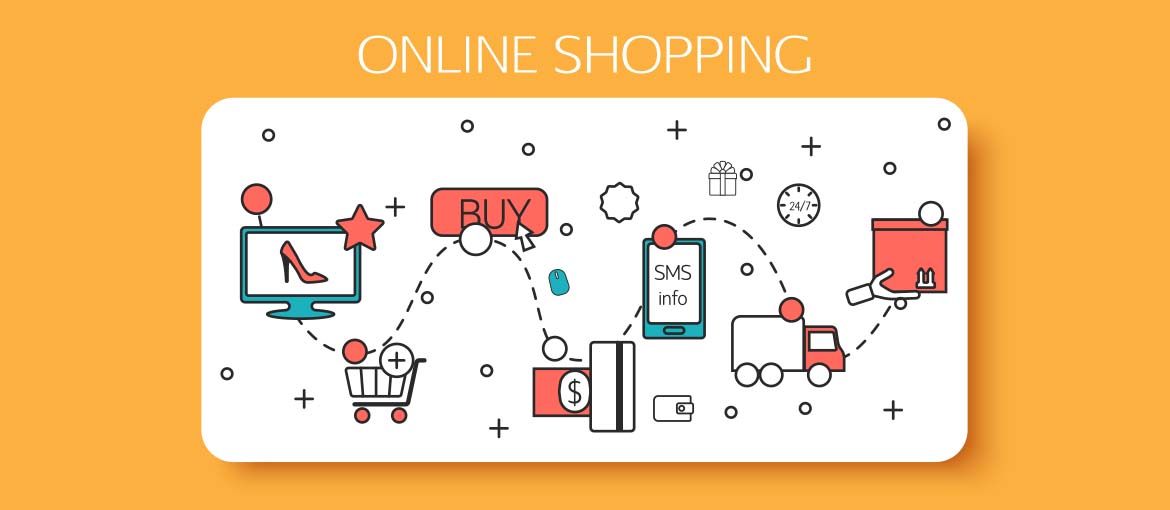What is an ecommerce?
There is a mode of commerce that, despite the difficulties of recent times, has not experienced a crisis but, on the contrary, in the first quarter of 2021 tripled its growth over the previous year. We are talking about e-commerce, which so many merchants have opened up to, partly out of necessity and partly to increase their profits, in recent months.
Therefore, we decided to explore the “e-commerce phenomenon” in order to give some more information to those who have decided to venture into online commerce. We do this by starting right from the basics, that is, from…
E-commerce, meaning and history
Let’s start with the definition of e-commerce: “the activity consisting in the purchase and sale of products and services through the Internet, either by traditional companies or through specialized platforms,” so we read in the Treccani dictionary. That little initial “e” stands for “electronic” and is distinctive since it is placed before the word “commerce.” E-commerce then is the term used to define electronic commerce: the business of buying and selling goods and services over the Internet.
Today it seems taken for granted to buy products and services online, so taken for granted that perhaps the definition above is superfluous. That is why it is always surprising to be reminded that e-commerce is, in fact, a relatively recent discovery: it dates back a few decades.

The beginning of e-commerce
Without belaboring the point too much, the premises that made the birth of e-commerce possible can be summarized in 3 stages:
- In 1991 the World Wide Web was born.
- Shortly thereafter, the first Internet service providers, companies offering connection through payment, were also born.
- Graphical browsers, such as Netscape Navigator (one of the first) and search engines began to be used.

The ground was ready for the emergence of a new commerce system. And so, between 1994 and 1995, the very first e-commerce companies appeared on the Web. In ’94, Amazon was born, one of the first companies to start marketing products online (in ’95)-in the beginning books, today we would say almost anything. In its first month of existence alone, the company sold in 50 U.S. states and 45 other countries around the world.

Then, after a short time, eBay and Alibaba were also born. Names that today correspond to great giants of online commerce.
In these thirty years of history, e-commerce has never stopped growing, also aided by the use of social networks, which have allowed companies to interact directly with their audience, analyze buying behavior, interests and improve their offerings through the feedback received. Even in the darkest economic times, e-commerce continues its unstoppable growth. The numbers prove it.
How is e-commerce growing? A bit of data!
We went to browse the data from Salesforce’s Shopping Index, the survey of online commerce trends. And we read that:
“If 2020 marked a real boom in online shopping, the first few months of 2021 seem to give us confirmation that the pandemic and subsequent store closures have catalyzed further global momentum in the digital commerce sector that is destined to remain over time.”
E-commerce grew 58 percent in the first quarter of 2021, surpassing growth rates for 2020 and previous years. The countries that provided the biggest boost were Canada (111 percent), the Netherlands (108 percent), the United Kingdom (91 percent) and Italy (78 percent).
But now let’s get into the specifics and see what types of e-commerce exist and how they work.
The main e-commerce models
A first simple distinction concerns the type of product we sell. We then identify:
- Indirect e-commerce or offline e-business: the commercial exchange involves a tangible good. The product is then purchased online and shipped via courier.
- The direct e-commerce or online e-business: the object of the exchange is an intangible good. No transportation is needed, therefore, but only a download or code is needed to enjoy the product or service. We are talking, for example, about buying software, apps, consulting a lawyer, buying transportation tickets, etc.
Now let’s move to the type of market we want to target. There are 3 main types of e-commerce:
- B2C (business to consumer): this is commerce between business and consumer. An example? The website of a clothing store that sells online to its customers.
- B2B (business to business): is trade between businesses.
- C2C (consumer to consumer): is trade between consumers who use a platform to offer products they no longer use. An example? Vinted, the app for selling and buying used clothing.
Once we have established the market we are interested in, let’s go inside an e-commerce to get a good understanding of how it works.
How does an e-commerce work?
Let us now imagine that we are exploring a B2C e-commerce. We enter the site and find ourselves in front of a catalog of products divided into categories that we can select to facilitate our search. We choose our preferences, locate the item that interests us and enter the product page where we can enjoy textual and visual content about the item. We are convinced! With one click we place it in the shopping cart and complete the order by choosing the payment method and delivery address. The courier will deliver it to us in a few days.

For this process to happen, the company must obviously have its own e-commerce and take care of the online catalog by keeping it up-to-date; it must take care of warehouse logistics, ensure adequate customer service and shipment tracking; and it must, if it wants to grow its business, also take care of online business promotion. One of the most delicate parts of all these tasks is precisely the beginning: the creation of the site. It is at this stage that important decisions have to be made, such as…
The choice between e-commerce software or proprietary site
Setting up your ecommerce business starts with a decision to be made: do I rely on an ecommerce platform or do I create my own proprietary site? To help you, here we identify the main advantages/disadvantages of the two solutions.
E-commerce platforms
If you rely on e-commerce platforms such as Magento, Shopify or WooCommerce, you can create your site quickly, easily and inexpensively. You start with preset templates that you can customize. Of course, you don’t have much chance to configure the site as you like and most likely you will have to compromise. However, we recommend that you seek the services of a programmer who will help you set up your e-commerce via these platforms and make sure that it is as efficient as possible.

https://woocommerce.com/product-category/themes
The proprietary site
E-commerce development professionals can design a site modeled exactly to your needs and therefore very customized. One downside? The price, which in this case is often much higher.
Regardless of the route you take, crucial is to offer your customers the best possible shopping experience: simple, transparent, secure.
A good e-commerce must.
Be optimized for search engines, so that it can be found without difficulty, and it must ensure excellent performance even when traffic is high-for example, during the promotion period.
Company-side, it must be easy to manage, so that every action can be taken quickly, without having to constantly knock on the programmer’s door. Of course, on the user side, it is also important that it be intuitive, to ensure a smooth experience. The architecture of the site must therefore be linear and logical, designed to accompany the purchase without obstacles.
Last but certainly not least: e-commerce must be usable from any device, including mobile. Indeed, data tell us that the number of purchases from mobile is equal-even slightly higher-than purchases from desktop: 28 percent from desktop, 29 percent on mobile devices.

Now a review: advantages and disadvantages of e-commerce
Having almost reached the end of this journey inside e-commerce, let’s sum up: what are the main advantages it offers? And what are the possible disadvantages? Small spoiler: as you may have guessed, the former far outweigh the latter. Let’s review them.
Advantages of e-commerce
Online commerce helps the business:
- To get more customers, since with an online store your business expands its boundaries.
- To increase profits, thanks to continuous sales service – 24/7.
- To cut costs: compared to a physical store, there is no rent to pay and no utilities.
- To reaching people interested in your business through personalized marketing campaigns – that is, based on users’ interests and behaviors.
Unlike traditional commerce, consumers who buy online can:
- Compare many different products and choose the best one for quality and price.
- Buy at any time and from anywhere.
Disadvantages of e-commerce
However, we must remember that:
- There is a segment of the public that struggles in the digital environment.
- There still remains a feeling of distrust toward online shopping because of the sharing of sensitive data (such as credit card data).
- Some are of the “I want to see and touch before I buy” school.
Knowing your business and your target audience thoroughly is critical to understand whether the online experience can be strategic and become a real source of revenue. Our advice is: stay in the present but with an eye always on tomorrow.

